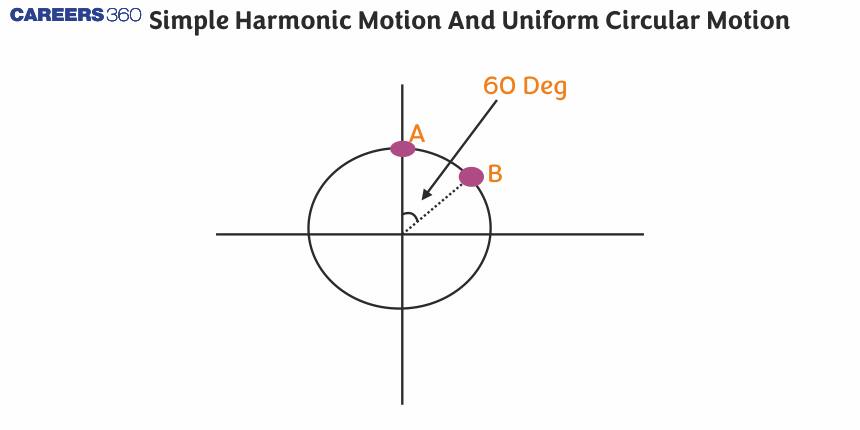Simple Harmonic Motion And Uniform Circular Motion
In physics, the study of the oscillatory system is crucial. If we consider many complicated phenomena to be combinations of simple harmonic motion, we can explain them. Periodic motion can be further separated into harmonic and non-harmonic motion. We are aware that an object moving to and fro along a line is known as simple harmonic motion. A pendulum, for example, swings along the same path as we swing it. They are oscillations in motion. In simple harmonic motion, the particle's acceleration is directed towards its mean location and is directly proportional to its displacement. The particle exhibiting simple harmonic motion has conserved total energy. There is periodicity in the motion.

In this article, we will cover the concept of the 'simple harmonic motion and uniform circular motion’. This topic, we study in Oscillations and Waves, which is a crucial chapter in Class 11 physics. It is not only essential for board exams but also for competitive exams like the Joint Entrance Examination (JEE Main), National Eligibility Entrance Test (NEET), and other entrance exams such as SRMJEE, BITSAT, WBJEE, VITEEE and more. Over the last ten years of the JEE Main exam (from 2013 to 2023), six questions have been asked on this concept. And for NEET one question was asked from this concept.
Let's read this entire article to gain an in-depth understanding of Simple Harmonic Motion And Uniform Circular Motion.
Simple Harmonic Motion
Simple harmonic can be represented as a projection of circular motion. If P moves uniformly on a circle as shown in the below figure, then its projection P′ on the diameter of the circle executes SHM.
As the particle P moves on the circle, The position of P′ on the x-axis is given by
x(t) = A cos (ωt + φ)
This is the equation of SHM on the x-axis with amplitude A and angular frequency as ω
Where:
A is the radius of the circle and φ is the angle that the radius OP makes with the x-axis at t=0
Similarly, The position of P′ on the y-axis is given by
y(t)= A sin (ωt + φ)
This is also an SHM of the same amplitude as that of the projection on the x-axis, but differing by a phase of π/2.
Recommended Topic Video
Summary
Uniform circular motion is defined as the motion of an object travelling in a circle at a steady speed. A one-dimensional representation of this motion is what is known as simple harmonic motion. When a point P moves with a constant angular velocity on a circular path, it is said to be in uniform circular motion. Simple harmonic motion can affect its projection on the x-axis. This is similar to an oscillating mass placed onto a spring and moving linearly vertically.
